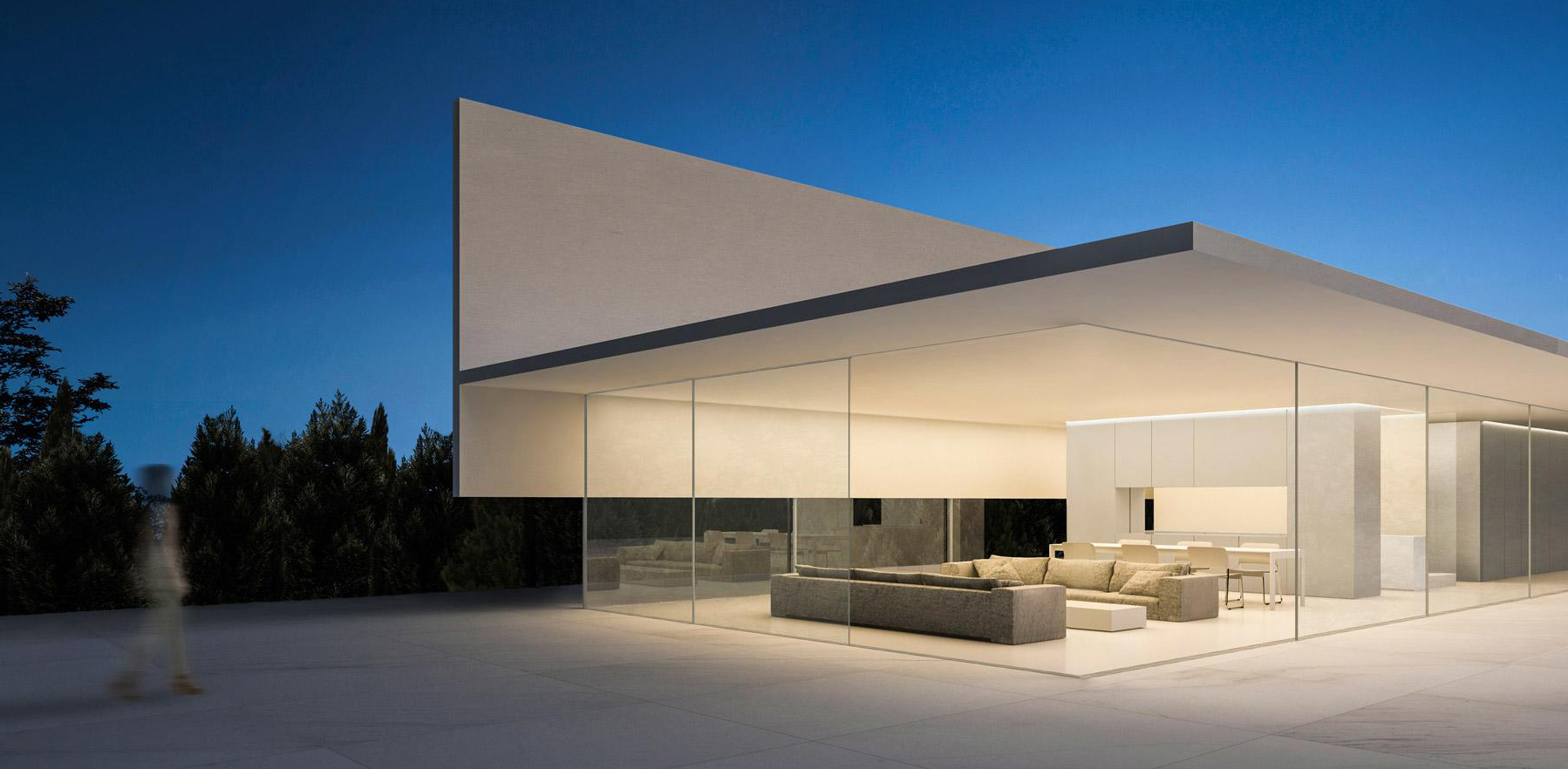Architizer is thrilled to announce that the 2026 A+Product Awards is open for submissions! The clock is ticking — get your products in front of the AEC industry’s most renowned designers by submitting today.
Few materials inspire creativity like tiles. Available in a range of sizes, shapes, colors and materials, tiles provide durable surfaces and finishes to both interior and exterior spaces. As one of the oldest forms of decorative arts, tiles date as far back as the Egyptians, who decorated their houses with blue tile bricks, as well as the Mesopotamians, who used glazed bricks. Tiles are easy to care for, so they are ideal for high-traffic areas or areas where there’s moisture or dirt.
Today, tiles have expanded to encompass a wide range of materials, applications, patterns and designs. Wall tiles specifically differ from floor tiles in that they are usually not intended to be load bearing. The glazes used in the manufacturing of a wall tile are also different, and are not designed to resist wear from foot traffic. They are often lighter and thinner than floor tiles. Exploring the basics of wall tile selection and specification, we’ve created an intro guide to wall tiles specifically for architects. From materials and sizes to ratings and maintenance, the guide serves as a starting point to understand how tiles can be used in modern designs.
Research Wall Tile Manufacturers
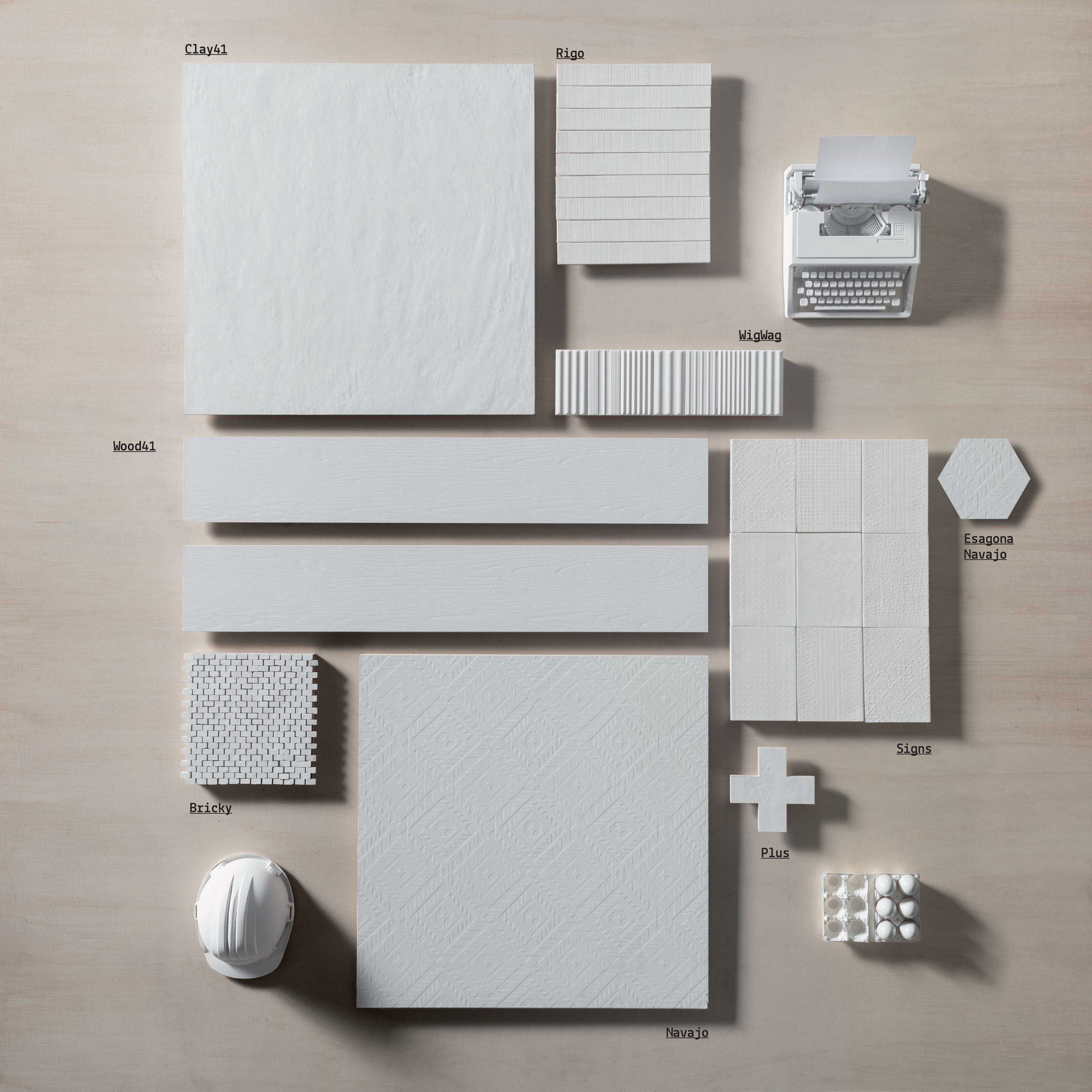
Tiles by 41zero42
Materials & Types
First and foremost, it’s important to understand that tiles can be made from many, many different materials. However, there are some standard types. Tiles are manufactured as a piece of hard-wearing material using ceramic, stone, metal, glass, or various types of clay. They can also be made from lightweight materials like perlite or wood, though these are far less common. The following tile materials can be found around the world.
Ceramic or Porcelain
As the most common wall tile type, ceramic and porcelain tiles differ namely on water absorption rates. Tile that absorbs water at a slower rate is normally called porcelain, and is best for high-moisture spaces like bathrooms. Porcelain tiles are produced from a finer, denser, more impervious clay then ceramic. They’re fired at higher temperature, making them stronger, harder and more damage resistant than non-porcelain ceramic tiles. Ceramic tiles are usually produced by firing red or white clay in a kiln, and coating with a durable glaze which carries the color and pattern. While ceramic tiles are not suitable for outdoor use, they can be used in areas of light to moderate traffic. Also, ceramic tiles are not as hard as porcelain, so they can be cut easier.

Arianna by Bardelli
Glazed Wall Tile
Glazed tiles are typically used for wall applications, and the most popular being subway tiles with width-to-height ratio of about 2:1. Glazed tiles are usually ceramic or porcelain. They are normally fired at a high temperature to create a dense, durable tile that’s resistant to moisture. The process of glazing allows for brighter colors and can create a glass-like surface. With glazed tiles, it’s important to remember that PEI Wear Ratings will tell you if the tile is best suited for walls.
Glass
Glass tiles are pieces of glass in various colors formed into uniform shapes. They’re available as both mosaic collections with a mesh backing and as individual tiles. Glass wall tiles can be used to design a patterned or plain back splash in the kitchen or bathroom. Glass wall tiles are much more solid, durable and moisture-resistant than many tiles. They are also one of the easiest tiles to wash because their surface is far less porous than the surface of ceramic tiles. These means that they are not prone to excessive absorption of different impurities. They can also be combined with many other finishing materials, such as Dutch tiles, granite, wood, plastic, and marble.

Rhumbus by Petracer
Mosaic Tile
Traditionally, mosaic tiles are decorative designs made up of small materials arranged to create a pattern or image. A mosaic is defined as an inlay design pattern with tiles smaller than 2×2”. Individual mosaic patterns vary greatly, featuring diverse materials, colors, and tile shapes. They are available in shapes and styles like square, penny round, arabesque, chevron or herringbone. Normally, mosaic tiles are used for backsplashes and walls. Mosaic tile can be used for floors, but this application isn’t popular because its many grout lines make clean-up harder.

Dolce Vita by Edilcuoghi
Quarry Tile
Quarry tile is a hard, impervious paving tile made from the ground minerals formed and fired in much the same way as is used to make brick. This unglazed tile is used for flooring, inside or outside, with great slip resistance. They are typically harder than clay because of the minerals used and the high firing temperatures. Unlike clay terracotta, quarry tiles are not porous and will resist water; and unlike ceramic tile and porcelain, quarry tile does not have a surface glaze layer. One downside to quarry tile is that it can be harder to clean.
Natural Stone Tile
Natural stone tiles have been used for a very long time. The tiles remain popular today due to their ability to withstand wear and tear while retaining their aesthetics. Normally, stone wall tiles are made from granite, marble, slate, and travertine. These work well where moisture is not a concern. Natural stone tile will have rectified edges. They can be heavy, and all stone tiles are porous. It’s important to remember sealing before installation is complete. Natural stone tiles can be found in a variety of commercial and residential properties and applications, mainly in kitchens, bathrooms, and hallways.

Visual Design by Ceramiche Supergres
Sizes
One of the biggest decisions in selecting what type of tile to use in a design is the tile size. There are countless options available, but common practice follows a series of regular sizes that are readily specified. The size of tile you choose can have as much an effect on the appearance of your project as the design and finish. Wall tile is thinner and comes in squares from 3 inches by 3 inches up to 6 inches by 6 inches. For something like mosaic tiles, they are 2 inches square or smaller and can be installed individually. Larger tiles will leave a room with less grout lines, creating a more streamlined look that can make a small room seem bigger. Remember that larger tiles tend to need more adhesive for installation. The following are some common sizes and their applications.
Square Mosaic
Mosaic tile is most commonly used around the home as wall tile as kitchen or bathroom backsplashes. The most popular materials for mosaic are ceramic, porcelain, and glass, followed by stone and metal. Mosaic tile is individual tesserae in 1-inch by 1-inch squares. Typically, twelve rows by twelve columns of mosaic tiles are joined to form a sheet that is roughly 1-foot by 1-foot square. Mosaic tile with each individual tile sized at 2 inches square is available in either loose or mesh-bound form. The mesh backing that holds the tiles together can be easily cut from the back with a utility knife.
Blend
This tile is not large enough to truly call it subway tile, and it has more of a mosaic tile appearance. Thus it can be called a blend. Tile of this type is sized at a 1:2 aspect ratio, where the width is twice that of the height. The blend is bound on the back with mesh. It’s most commonly used as kitchen or bathroom backsplashes, or as wall wainscot.
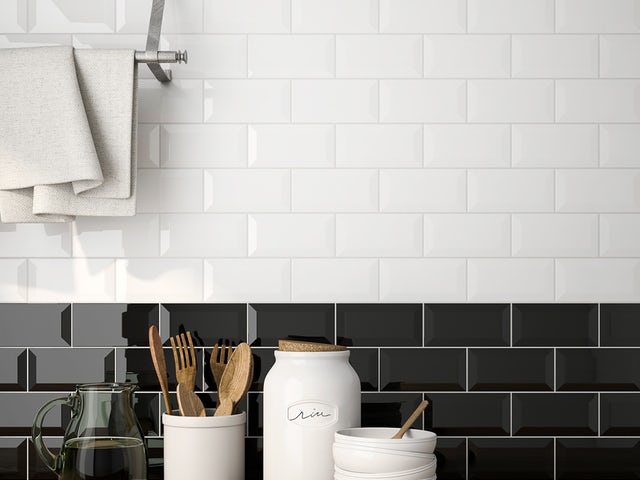
COLOR Collection – Subway Tile
Subway
As one of the most popular tile types, Subway tiles are made with a 1:2 aspect ratio (height to width). A true subway tile is no smaller than 3 inches high by 6 inches wide. They are used on bathroom walls, kitchen or bathroom backsplashes, showers and tub surrounds. Subway tile is most often made of ceramic or porcelain, though sometimes it is made of glass or metal.
Square Tile
Square 4-inch tile is normally used in kitchens and baths, though also sometimes in floors or countertops. They can be also applied in backsplashes or showers, and four-inch tile is normally made using ceramic, porcelain, glass, stone, and metal.
Plank Tile
Plank tiles are normally 4 inches wide by 24 inches long, or larger. As far as width, they can be made as large as 12 inches. Planks were made as long, narrow tiles normally applied in flooring. In modern interiors, plank tiles are increasingly used to create wainscot, backsplashes or accent walls.
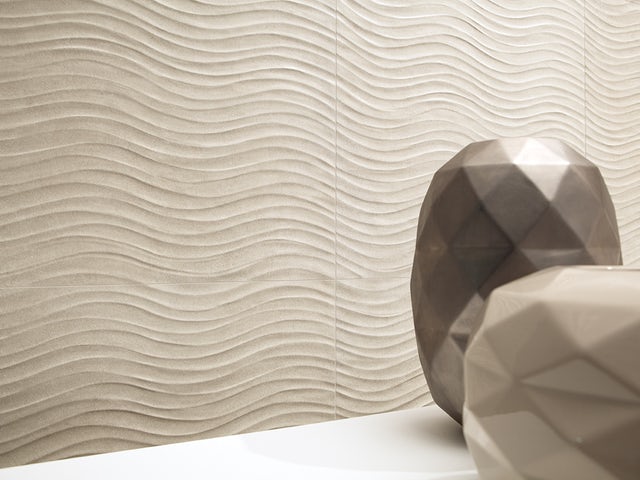
URBAN by Ceramiche Piemme
Porosity & Firing
Porosity is the ratio of voids to solids in a tile, which affects the percentage of water absorbed into a tile. The denser the tile, the less water it absorbs. The classifications for the porosity of tile are: impervious (least absorbent), vitreous, semi-vitreous and non-vitreous (most absorbent). It’s important to understand a tile’s porosity because many spaces may require moisture-proof applications. For example, porous tile shouldn’t be used outdoors where cold weather produces freeze / thaw cycles.
Raw tile material, called bisque, can be either single-fired or double-fired. The firing process affects the hardness of tile. Usually, hotter the firing and the longer it’s fired for, the harder the tile will be. For single-fired tiles, the glaze is applied to the raw material and baked once in a kiln. Double-fired tiles are thicker. After color or decoration is added, the tile is baked a second time.
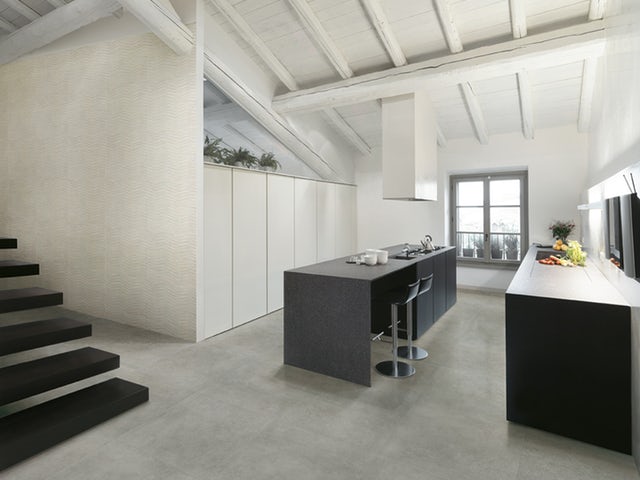
URBAN by Ceramiche Piemme
Tile Ratings
Tile hardness ratings help you determine the right tile for a space. For instance, baths require a moisture-proof, nonslip material, while entryways need a hard, abrasion-resistant, moisture-proof tile. Some types of tile are harder than others, so tile is rated by a series of standardized tests. These tests evaluate a tile’s relative hardness (the Mohs scale), its ability to stand up to wear and the percentage of water absorbed. While some tiles are rated for indoor or outdoor use only, others can be used in either application.
The Porcelain Enamel Institute hardness ratings are:
Class I – No foot traffic. These tiles are for wall-only applications.
Class II – Light traffic. Interior residential and commercial wall applications. These are for areas where little abrasion occurs, such as bathrooms.
Class III – Light to moderate traffic. Use these in residential settings with normal foot traffic. They are also ideal for countertops and walls.
Class IV – Moderate to heavy traffic. These tiles are acceptable for all home use in addition to medium commercial or light institutional use.
Class V – Heavy to extra heavy traffic. Approved tile for all residential applications, heavy commercial work and institutional foot traffic.

Marvel PRO by Atlas Concorde
Maintenance & Durability
Tiles are a versatile and durable product. In most cases, they can be cleaned easily because dirt and liquids on the surface can be wiped away. Smooth and glazed surfaces are usually easier to clean than rough and unglazed ones. Wall tiles are usually easy to maintain, and depending on the tile type, can help provide a water-proof barrier to areas where moisture is a concern. Some tiled applications can even last for generations. Tiles are hardwearing and not susceptible to fading from UV light. Careful selection can enhance and protect a space or design and add to its capital value.
Case Studies
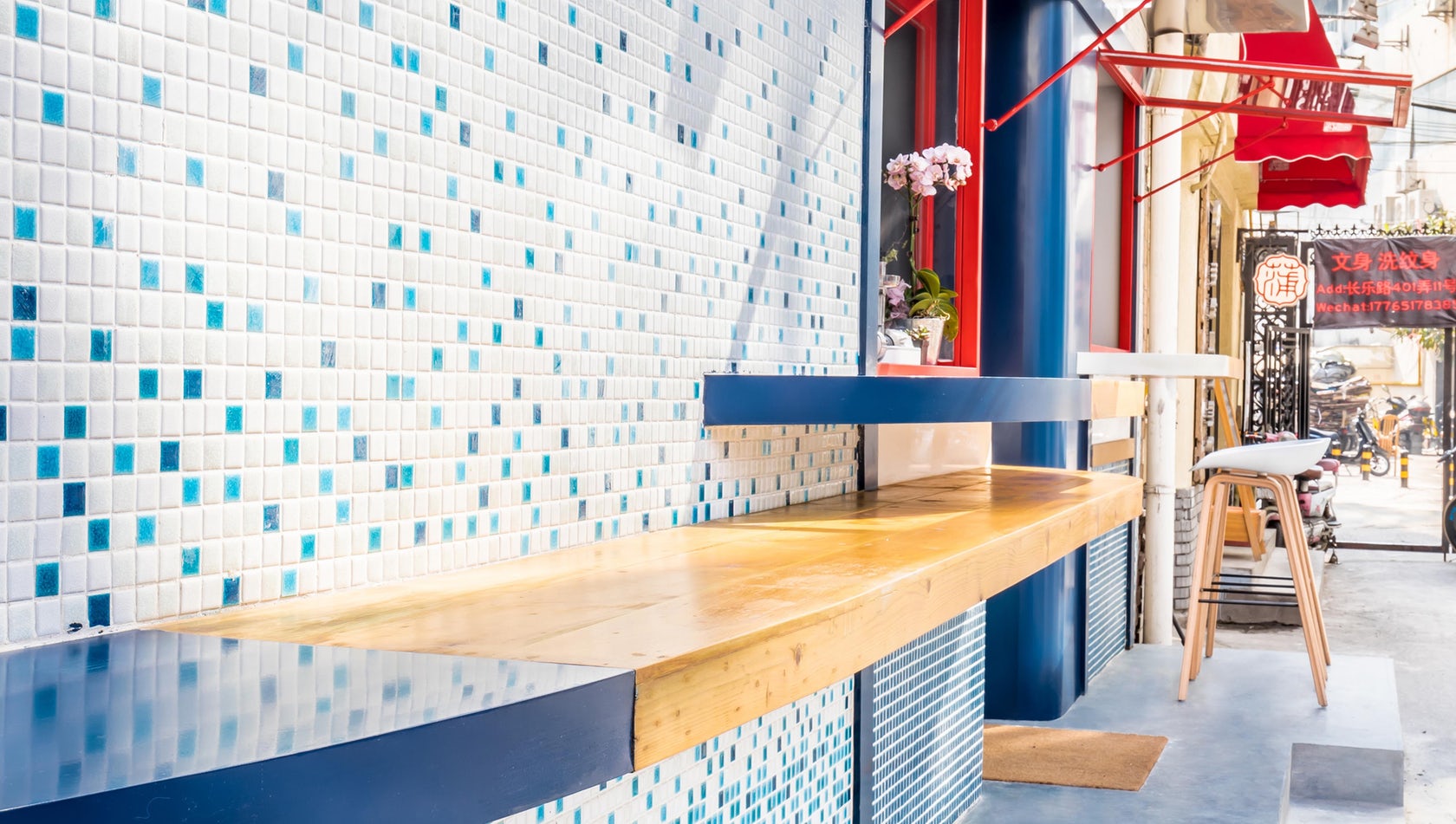
POKE POKE by STUDIO DOHO
POKE POKE by STUDIO DOHO in Shanghai, China
STUDIO DOHO developed an “Urban Surf” concept for new Shanghai-based restaurant POKE POKE. The 32 sqm project, situated on the ground floor of an old Shanghainese lane house in the Jing’an District of the city, makes a bold statement with its gradient blue façade and surfboard inspired countertops. Limited streetfront facade and existing interior structural walls forced the entrance to be moved off the main street, creating a large solid wall at the main storefront. The designers responded by creating an eye-catching gradient tile wall that represents the sea meeting the sky. The mosaic wall stands out from the streetside and attracts customers to the store entrance, while providing a place for local residents to gather and socialize.
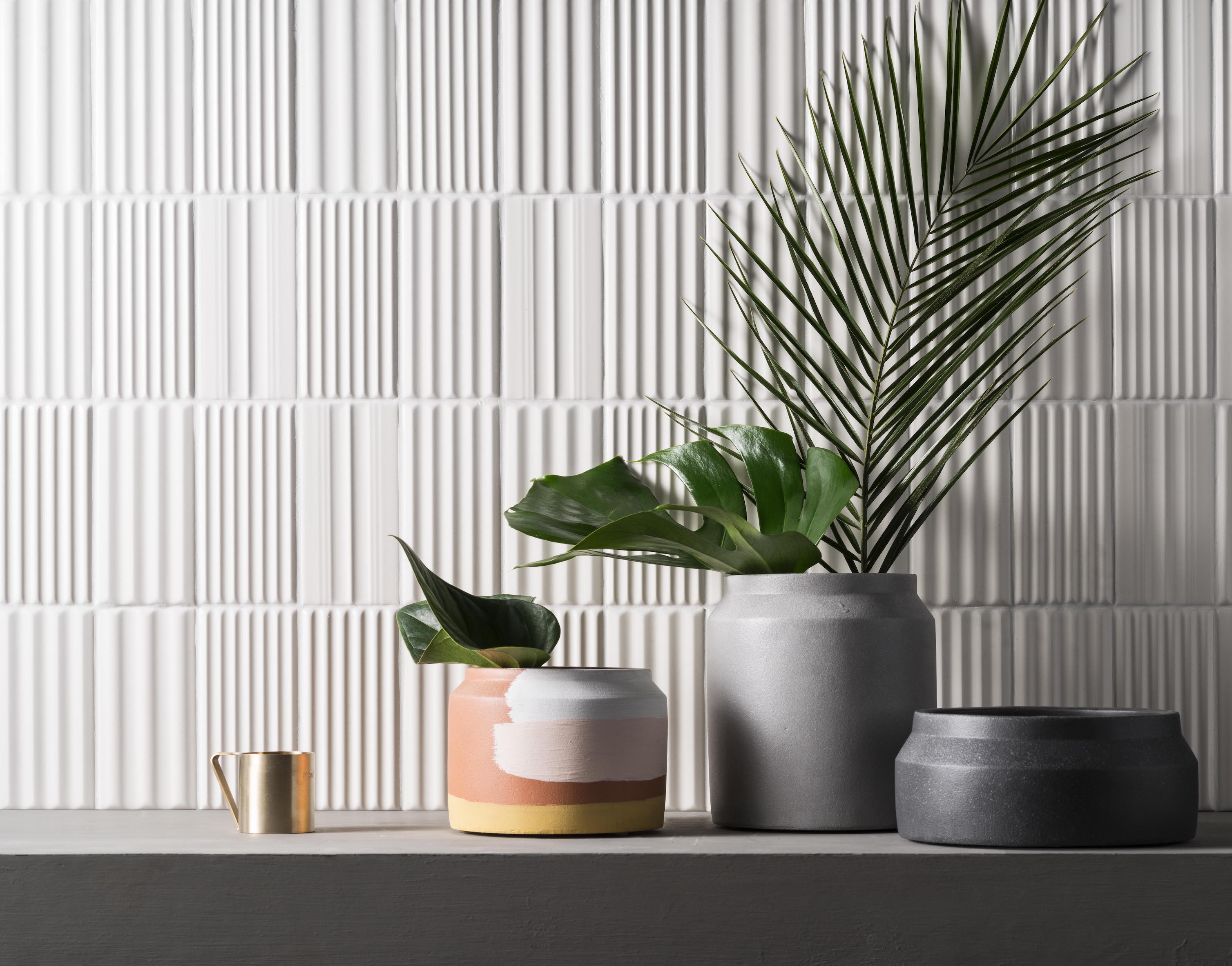
Wig Wag in white by 41zero42
17 Stunning Ceramic Tile Products Every Architect Should Know
The humble yet versatile ceramic tile truly gets around, from cladding walls and floors to furniture and even building exteriors. In fact, it’s such a go-to product type in both residential and commercial projects that ceramic tile consumption in the US alone amounts to more than 2.75 billion square feet every year. Spotlighting some of the many options available, here are some of the standouts from past editions of America’s premier tile and stone expo Coverings.
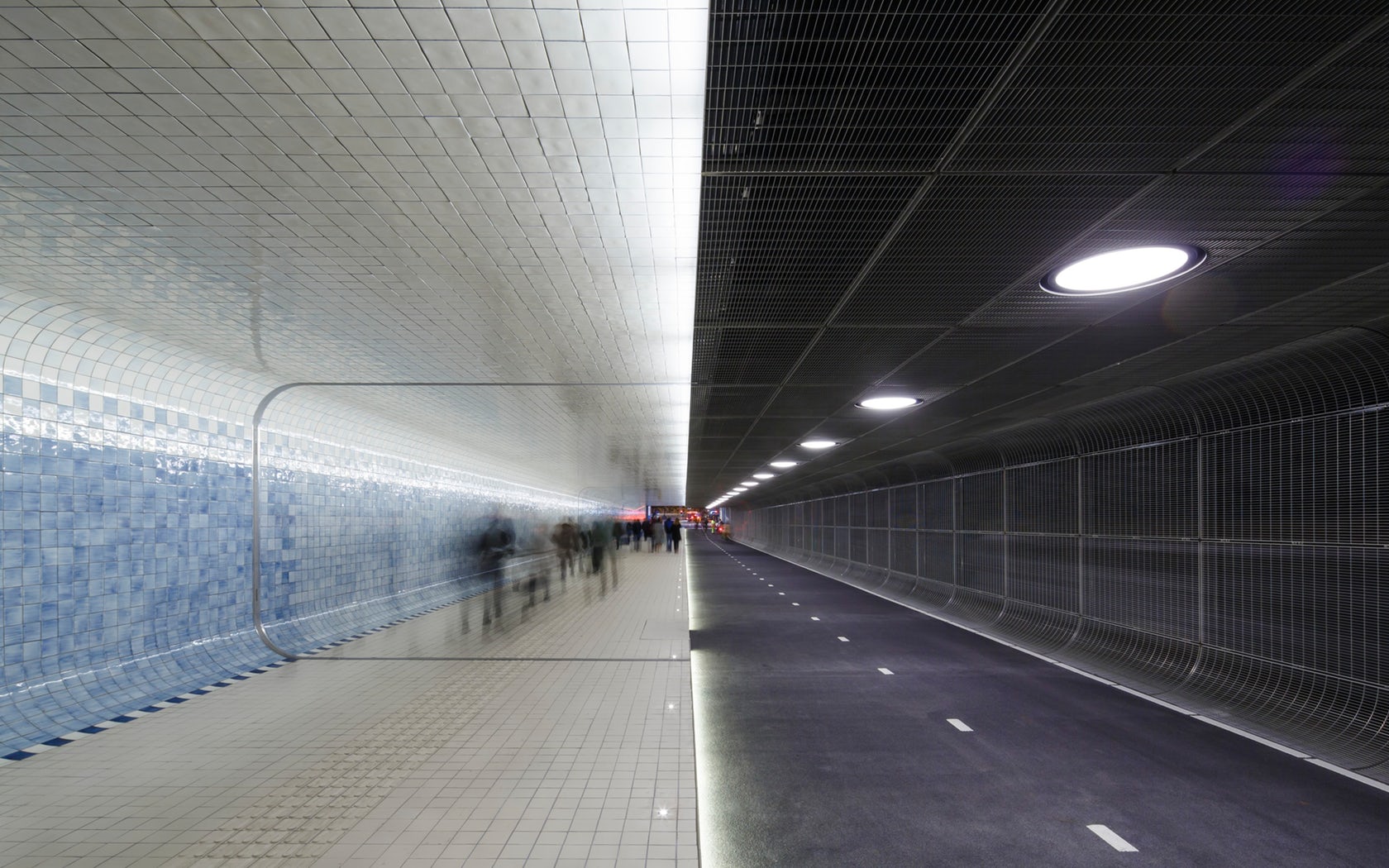
Cuyperspassage by Benthem Crouwel Architects
Cuyperspassage by Benthem Crouwel Architects, Amsterdam, Netherlands
Cuyperspassage is the name of the new tunnel at Amsterdam Central Station that connects the city and the waters of the IJ-river. Since the end of 2015 it has been used by large numbers of cyclists, some 15,000 daily, and pedestrians 24 hours a day. This ‘slow traffic corridor’ was exactly what many users of the city felt was lacking. What once was by necessity a left or right turn is now, at long last, straight ahead. The tunnel is clad on one side by nearly 80,000 Delft Blue tiles: a true Dutch spectacle at a central spot in Amsterdam. The ceramic company, Royal Tichelaar Makkum, spent five years making the 46,000 wall tiles for the tableau, as well as 33,000 floor tiles, in the traditional Dutch tile size of 13 x 13 cm.
Architizer is thrilled to announce that the 2026 A+Product Awards is open for submissions! The clock is ticking — get your products in front of the AEC industry’s most renowned designers by submitting today.
 Cuyperspassage
Cuyperspassage  POKE POKE
POKE POKE 